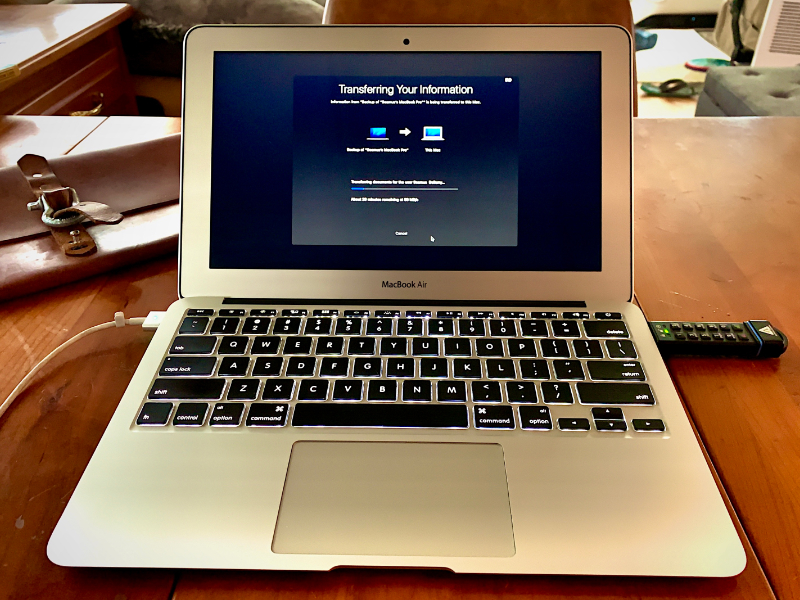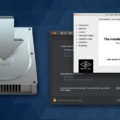Are you looking for a reliable laptop that’s lightweight and powerful? If so, then the Macbook Air may be the perfect choice for you. This sleek and slim laptop is both stylish and powerful. But before you get started with your new device, it’s important to make sure that your Macbook Air is running the latest version of macOS.
Fortunately, updating your Macbook Air to the latest version of macOS is simple and straightforward. Here are the steps you need to take:
1. First, make sure your Macbook Air is connected to a stable Wi-Fi connection. This will ensure that all updates are downloaded quickly and accurately.
2. Next, open up the App Store on your Macbook Air and click on the Updates tab at the top of the window. You’ll be shown a list of software updates available for your device.
3. Find “macOS” in this list and click “Update” next to it. This will begin downloading the updated files onto your device, which can take some time depending on your connection speed.
4. Once the download is complete, you’ll be prompted to restart your MacBook Air in order to install the software updates correctly. Click “Restart” when prompted and wait for the installation process to finish before logging back into macOS with your username and password.
And there you have it! Updating your Macbook Air is quick and easy if you follow these simple steps outlined above. Keep in mind that some updates may require more than one restart so make sure to save any work before starting an update process just in case something goes wrong during installation!

Unable to Obtain the Latest Update on MacBook Air
There are a few possible reasons why you might not be able to get the latest update on your MacBook Air.
First, you may have a poor network connection. If your internet signal is weak or unreliable, then it can prevent the update from downloading properly. Try reconnecting to a stronger Wi-Fi network and see if that helps.
Second, you may not have enough disk space available for the update. Check that you have at least 15 GB of free space on your hard drive before attempting the download again.
Third, Apple servers can sometimes experience issues that prevent updates from being processed correctly. You can check the Apple System Status page to see if there are any known issues that might be preventing your download from completing successfully.
Finally, there may be an issue with your macOS software itself. If none of the above solutions work, then try resetting your Mac’s SMC (System Management Controller) and PRAM (Parameter RAM). Instructions for doing this can be found on Apple’s support pages online.
If all else fails, it’s also possible that you don’t meet the system requirements for running the latest macOS version on your MacBook Air. Check Apple’s website to make sure that your device is compatible with the new software before trying again.
Unable to Update Mac to Latest Version
There could be a few reasons why your Mac won’t let you update to the latest version. The most common reason is a lack of storage space. Before macOS can install the new update files, it needs enough free space available on your hard drive. If there isn’t enough space, then the installation will not proceed.
Another potential issue is that you may be running an older version of macOS that doesn’t support the new update. In this case, you would need to upgrade your Mac to a version that is compatible with the latest macOS version before you can install it.
Finally, if you are having trouble downloading or installing the updated files, it may be due to a software or hardware issue on your Mac. In this case, it’s best to contact Apple Support for assistance in troubleshooting and resolving the issue so that you can update your Mac successfully.
Forcing an iOS Update on a MacBook Air
To force iOS to update your MacBook Air, you need to first connect your device to your Mac. Once the device is connected, open the Finder window on your Mac and select the device in the Finder sidebar. Then click on General in the button bar and click ‘Check for Update’. If there is an available update, click ‘Update’ to install it.
Updating Mac to 10.14 When No Update is Available
If your Mac is saying that there are no updates available, you may need to check your App Store preferences.
First, open the System Preferences application and select the App Store option. Make sure all the options for automatic updates are checked, then click “Check Now” to manually check for any available updates. If macOS 10.14 is available, it will appear in the list of available updates.
If you still don’t see 10.14 listed as an update option, you can try downloading the macOS 10.14 installer directly from Apple’s website. Once it’s downloaded, open it and follow the on-screen instructions to install the update onto your Mac.
Troubleshooting a Failed Mac Update
If your Mac doesn’t update, there are several steps you can take to troubleshoot the issue. First, make sure your Mac has enough storage—often low storage can cause problems with updates. Next, try restarting your computer, as this can often fix minor issues. If that doesn’t work, turn off and on your Wi-Fi connection to see if that helps. If not, you may want to check for server errors that could be causing the issue. Additionally, resetting the NVRAM can sometimes help with update issues. If all else fails, you may want to try booting into safe mode and running a Combo Update—this will update both system software and any related drivers. Finally, make sure that your date and time are set to “Automatic” in order to prevent any further complications.
Updating a Mac When Space Is Limited
If you don’t have enough space to update your Mac, there are several steps you can take to free up some space. First, try deleting unused files and applications that you no longer need. You can also use the Manage Storage feature under the About This Mac menu to see what is taking up space on your computer. There, you can optimize storage and delete old backups, downloads, and other items that may be taking up valuable space. You can also move large files such as photos and videos to an external hard drive or a cloud storage provider such as iCloud Drive or Google Drive.
Finally, if all else fails, it may be time to upgrade your Mac with a larger hard drive or Solid State Drive (SSD). Doing so will provide much more space for running system updates and other tasks on your device.
Conclusion
In conclusion, the Macbook Air is a great choice for those looking for a lightweight and portable laptop that still packs plenty of power. Its thin and light design makes it easy to carry around, while its long battery life ensures you can stay productive all day long. The Macbook Air also offers a wide range of features, including an impressive Retina display, powerful Intel processors, high-speed storage options, and more. Whether you’re a student or a professional on the go, the Macbook Air is an ideal device for anyone who needs a powerful and reliable laptop.







